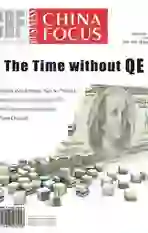NEWS BRIEFS
2015-03-10


Haixin Iron & Steel Group enters pre-insolvency restructuring proceedings
Haixin Iron & Steel Group, the largest private iron and steel maker in northwestern Chinas Shanxi Province, entered pre-insolvency restructuring proceedings after eight–month full suspension of production.
The Intermediate Peoples Court of Yuncheng City, Shanxi Province has decided to accept the restructuring application filed by four creditors of Haixin Iron & Steel Group, marking the steel makers pre-insolvency restructuring into legal proceedings, said local government sources on Nov. 16.
Located in Wenxi County of Yuncheng City, the steel maker once ranked second among its peers in the province with annual capacity of 5 million tons. Besides, it was also the provinces largest private enterprise. However, its past glory has been gone due to the overcapacity across the industry, market collapse and internal management failures.
Moreover, the banks refused to give any loans to the steel maker and even recalled 4 billion yuan worth of loans ahead of time earlier this year, forcing it to cease all production.
According to publicly available data, the total debts and external guaranties of Haixin Iron & Steel Group stood at around 10.46 billion yuan and the book value of all its assets totaled 10.07 billion yuan, representing a debt-to-asset ratio of over 100%.
Haixin Iron & Steel is also embroiled in several lawsuits filed by its creditors who wanted the steel maker to pay off overdue debts.
Saddled by deteriorating financial situation, massive delinquent loans and huge overdue debts, Haixin Iron & Steel failed to resume production by itself.
In August, the above-mentioned four creditors respectively filed a preinsolvency restructuring application to the intermediate peoples court after the failure in production resumption.
Pre-insolvency restructuring is one of legal measures set out in Chinas New Bankruptcy Law to bail the firms out. After entering the restructuring proceedings, the firm not only can suspend the judicial seizure, keep its assets intact, and have its existing loans cease accruing interest, but also unfreeze its seized assets and accounts with newly-injected funds to keep them from being compulsively transferred.
The firm will restructure its business portfolios and debts under the management of the court and with the participation of interested parties, as efforts to get out of difficulties.
EIU: China expected to be biggest net investor by 2017
On Nov. 17, the Economist Intelligence Unit (EIU) released a report titled China Going Global Investment Index 2014.
According to the report, China is expected to replace the United States as the worlds largest net investor by 2017, with outward direct investment(ODI) of 264 billion dollars surpassing foreign direct investment (FDI).
“According to data released by Word Bank Group in early 2014, based on the Purchasing Power Parity (PPP), China has already replaced the U.S. as the worlds largest economy in the year of 2014,” said Liu Qian, associate director of the China Regional Forecasting Service at the EIU.
“Based on statistical data from the International Monetary Fund (IMF), we expect China to surpass the United States as the worlds largest net investor by 2017. By 2024, China is expected to be the largest economic power in the world with its nominal GDP exceeding that of the United States.”
The report said Chinas real GDP growth rate would to be slightly more than 5% by 2020, compared with over 7% in 2014, as rising costs in domestic land and labor force make overseas production and sales more attractive.”
The China Going Global Investment Index uses a robust and quantitative approach to rank 64 countries on the basis of their attractiveness for Chinese ODI.
According to the report, the United States, Singapore and Hong Kong are still three most attractive ODI destinations in the world for Chinese enterprises, while Japan falls to the sixth place from the fourth place a year earlier, due to its cooling relationship with China which could create additional barriers to investment approval and business.
The EIU adds two indexes of R&D intensity and service sector in GDP to the report which were not incorporated into the 2013 version, in order to reflect the latest trends in Chinese ODI, according to Liu.
Global enterprises R&D spending growth slows to 10-year low
The weak economic recovery is weighing on enterprises research and development (R&D) spending.
The R&D spending by large-scale enterprises grew at a ten-year low rate in the fiscal 2014 (as of Jane 30), according to a survey on top 1,000 listed enterprises by R&D spending across the world released on Oct. 30 by Strategy&.
The survey showed the total R&D spending of the 1,000 listed enterprises grew by 1.4%, well below 3.8% in the previous fiscal year. The growth rate of global R&D spending has been falling since its peak at 10.3% in 2011.
The global average ratio of enterprises R&D expenditures to revenues, or R&D intensity, fell by 17% in the past decade. For computer electronics and health care sectors, R&D spending accounted for nearly 50% of their total spending. However, in the fiscal year of 2014, R&D spending in the two sectors fell by 1.8% and 1.2% respectively from a year earlier. Aerospace and defense, consumer goods and telecom sectors also saw a slump in R&D spending.
“R&D spending varies widely by sector, as the software sector attached great importance to R&D rather than fixed assets while for the resource sector where the role of R&D is not very important, a R&D expenditure-to-revenue ratio of 1% or 2% is relatively high,” Peng Bo, partner at Strategy& Global, said. “In the auto sector, for example, R&D spending ratio is usually at about 5%, with a higher proportion of raw materials and labor costs.”
According to statistics, the Chinese enterprise R&D spending totaled $29.96 billion in fiscal 2014, a year-on-year rise of 46%, reflecting the status quo of Chinese enterprises in the transition.
Chinas economic growth began to slow after several years of high-speed expansion. The decision makers hope the enterprises can achieve a higher value through technologies and brands rather than the low price strategy.
Over the period, R&D spending by North American and European enterprises grew by 3.4% and 2.5%, respectively, while the spending in Japanese enterprises slumped 14%.
Chinese enterprises was still absent from the list of top ten enterprises by R&D spending, most of which specialize in automobile, software, Internet, computer electronics and pharmaceutical sectors.
On the other hand, Chinas top ten enterprises by R&D spending respectively specialize in aerospace defense, automotive, chemical energy, computer electronics, consumer goods and other sectors.
PetroChina, Chinas biggest oil and gas provider that reaped 15.68 billion dollars in net profit during the first three quarters of 2014, tops the list of the countrys top enterprises by R&D spending with a total R&D spending of 2.303 billion dollars.
The average ratio of Chinas enterprises R&D expenditures to revenues was 1.39% in fiscal 2014, below the global average of 3.7% in the past decade.
ChAFTA accelerating transformation of Chinas cattle and sheep breeding enterprises
On November 17, the 9-year-long negotiation for the China-Australia Free Trade Agreement (ChAFTA) came to an end.
Under the agreement, the comprehensive tariffs on Chinas imports of beef and mutton from Australia will be phased out within 8 to 9 years, which is expected to take a toll on Chinas red meat market.
Even if there are any tariffs, prices of imported red meat from Australia are lower than those of domestic products.
In recent years, despite Chinas rapidly growing red meat consumption, the domestic read meat production growth is slowing down, due to cost rises, development mode transformation, frequent natural disasters and rampaging epidemics.
In 2013, Chinas output of beef totaled 6.732 million tons, up 31.2% from 2011 with the average annual growth of 2.1%, while the mutton output was 4.081 million tons, a rise of 54.5% from 2000, implying an average annual growth of 3.4%.
On the other hand, a continuous rise in red meat prices and tight supply in some minority-populated areas made the country more dependent on imports.
Chinas current sheep husbandry is still in the traditional animal breeding mode, with low-level technicalization and specialization, inefficient breeding and production, directly affecting the actual supply of China mutton products, according to Yan Shuchun, the president of Mongolian Sheep Husbandry.
Nowadays, China imposes a 12% import tariff and a 13% VAT on imported red meat. Even so, the imported red meat are still cheaper than domestic products, said Chen Xiaoying, an agricultural analyst at Xmdj123.
Since the second half of 2009, China has seen a rapid growth in red meat imported from Australia. According to data from the Ministry of Commerce, China became the largest importer of Australias mutton products and thirdlargest importer of its beef products after Japan and the United States in 2013.
With the establishment of ChinaAustralia Free Trade Zone, more im-ported agriculture products will hit Chinas market with a lower price, offering Chinese consumers more high-quality and fair-priced products and spurring Chinese enterprises to transform the husbandry mode and enhance competitiveness.
The phase-out of tariffs will give a 9-year-long buffer time for domestic enterprises that suffer a big loss from the decrease in meat product prices, said Wang Xiaoyue, an agriculture analyst with Beijing-based Orient Agribusiness Consultant.
Wang suggested that the Chinas breeding enterprises should seize the time to enhance their competitiveness.
China faces obstacles on road to distributed natural gas development
As China is experiencing a transition in the energy consumption structure, natural gas is playing an increasingly important role.
Distributed natural gas projects, along with distributed PV projects, will get support from the government, with the leaders becoming more and more concerned on the development of distributed energy, according to Chinas 13th Five Year Plan for Energy Development.
At the Summit Forum for the Future of Energy held on Nov. 18, Xu Xiaodong, secretary general to the Distributed Energy Committee under the China Gas Association, pointed out that the distributed natural gas projects have a good prospect but there were still some difficulties.
China is lowering coals proportion in energy consumption structure while increasing that of natural gas as efforts to fight against air pollution. By 2020, Chinas natural gas consumption will account for more than 10% in primary energy consumption, according to a recent statement by Wang Yumin, deputy director at the National Energy Administration (NEA).
According to data from the NEA, the share of Chinas natural gas consumption in primary energy consumption was only 6% as of 2013, well below the global average level of 25%, indicating that the nations natural gas consumption has been constrained for a long time.
Xu said that the main problems include the high prices of natural gas and difficulties in connecting distributed natural gas projects into the grid.
Inadequate understanding of distributed energy , inflexible mechanism, dereliction of duty and institutional segmentation existing in local administrative departments are also obstacles to developing distributed energy.
The National Development and Reform Commission (NDRC) recently issued a detailed rule for the development of distributed energy, requiring distributed energy projects to conduct for post evaluation and supervision, and offering franchises for distributed gas projects .
Xu believed the franchises will push forward the development of distributed energy. However, some insiders pointed out that as the regulations on the franchises are not clear, enterprises can not well understand the conditions and threshold of the franchise application. More importantly, the price policy for distributed natural gas projects is not yet clear, making the earnings unpredictable.
As Chinas new energy industry has seen rapid growth in the field of PV and wind power, distributed energy will experience a similar process. according to Han Wenke, director of the Energy Research Institution of the NDRC.
